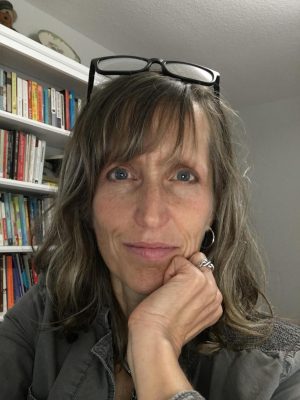Classrooms as Communities of Belonging
Bridgewater, Va. – Have you ever found yourself in a classroom wondering, Do I belong here? Do I belong less, more or the same as others? Do I want to belong in this place? What does belonging even mean? You are not alone, and your questions matter because belonging is a major contribution to motivation and academic success.
Schools have often failed at building communities of belonging. In fact, the history of formal education is fraught with schooling that, by purposeful design, excluded entire groups of people based on gender, race, class, ability, culture and language.
American schools were, in many ways, designed to elevate some over others and maintain inequitable social order. Thomas Jefferson, an advocate for public education, imagined schooling as a system in which the nation’s “best geniuses will be raked from the rubbish.” I hope that language jars you.
Many of us recall feeling sorted, judged or measured at school. Such experiences do not foster belonging. Instead, sorting and the inequitable practices around it foster cynicism, distrust and disconnection.
While feeling like an academic outsider might inspire some individuals, the more likely systemic outcomes include “weed-out” or “push-out” from school or the adoption of self-protecting, but distancing, behaviors Alfred Tatum calls “the cool pose.” A first step in establishing a community of belonging is to invite and appreciate questions about belonging.
A second step in developing communities of belonging is to be clear that belonging does not mean we are the same. It is easy to give lip service to appreciating differences and then act as if we are all the same. We must do the sometimes-difficult work of identifying differences, aware that appreciating differences may expose systemic injustice or hidden bias.
Thirdly, when we are committed to considering the perspectives of others, we must work together to establish the cultural “norms” of our classroom communities. These expectations vary per context. Hidden cultural codes of what counts as “polite” or “respectful” cannot be assumed in the inclusive classroom. Stating the obvious beats assuming we all know what “paying attention” looks like.
A fourth step in establishing belonging is designing learning activities that demonstrate the value of each person in the room. It is easy to say each person matters, but how much can I really matter if no one knows my name or I am rarely asked to contribute? Structured and inclusive discussion, along with purposeful learning of names, demonstrate that learning is social.
In creating classroom communities of belonging, it is helpful to think of the “Beloved Community” of justice, love, inclusiveness and equal opportunity envisioned by Martin Luther King Jr. Such communities seek the success of all, knowing that paths to success are varied.
These principles apply at any level, and it is my hope that students and teachers develop communities of belonging in which each contributes meaningfully while feeling supported, not sorted, in their learning. In this way we find the geniuses within each of us.
Beth Lehman, Assistant Professor of Education

